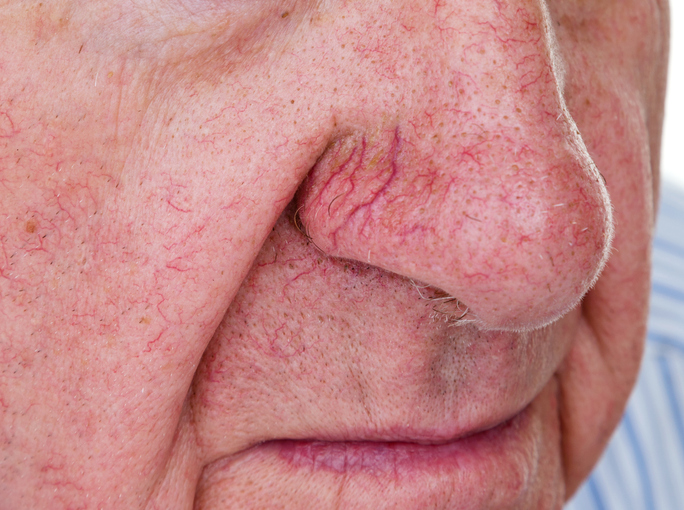
Our bodies change as we age. It’s a natural part of life. But often these changes aren’t ones we want to embrace. Consequently, when small, thin veins begin to appear in inconvenient places, such as on the legs, hands, or nose, it’s perfectly normal to want them gone. These lines are called spider veins. Fortunately, spider veins are easily removed, we’ll be going over how to get rid of them on your nose. Vein and Vascular Institute in New Jersey uses the latest in technology and cutting-edge procedures to lessen the appearance of nose spider veins.
Table of Contents
ToggleWhat Causes Nose Spider Veins?
The formation of superficial spider veins on your nose or face is sometimes genetic. This means they may run in families and appear normally as you age. They’re mostly harmless except for how they make you feel about your appearance. Spider veins that appear on your nose, forehead, or cheeks are especially unwelcome because they’re impossible to hide. Some causes of nose spider veins include:
- Hormonal changes during menopause
- Smoking
- Alcoholism
- Obesity
- Trauma
- Over-exposure to sunlight
If you’ve recently begun to notice the telltale signs of nose spider veins, contact Vein and Vascular Institute to set up an initial consultation. Treatment is simple and non-invasive, and you’ll be pleased with the results.
Get Rid of Spider Veins Fast
Vein and Vascular Institute offers several state-of-the-art treatment options to get rid of spider veins quickly. They’re non-invasive, same-day treatments that will have you back to your regularly scheduled routine immediately. They include:
Sclerotherapy
During sclerotherapy, a salt solution is injected into fine spider veins, causing them to collapse. The dark lines are then eventually absorbed by the skin and become invisible to the eye. Sclerotherapy may be used on other parts of the body as well, including the hands, breasts, ankles, and feet.
VEINWAVE™
VEINWAVE™ uses radiofrequency energy to close nose spider veins and make them disappear. This is a heat, or thermal, process that uses a pencil-like device to trace over unwanted veins. The veins then coagulate and collapse. Afterward, they’re absorbed by the skin. The results are immediate.
Laser Ablation
Laser ablation is often the preferred treatment for the small veins that appear on the face and nose. During laser ablation, a small laser is aimed at shallow veins that appear just beneath the skin. You may need to return several times for repeat treatments until the veins are gone.
When you book an initial consultation with one of our friendly and experienced vein specialists at Vein and Vascular Institute, we’ll discuss your options for removing unsightly nose spider veins.
Setting Up a Consultation
The sooner you book a consultation with a vein specialist near you, the sooner you’ll begin enjoying a vein-free appearance. It’s easy to make an appointment, and you’ll be so glad you did.
Find a Vein Specialist Near You
Vein and Vascular Institute has multiple locations throughout New Jersey to better serve you. Our vein specialists are experienced and friendly, and our hours are convenient. Meet our vein specialists in New Jersey.
Best Questions to Ask Doctors About Spider Veins
Have your questions ready when you see us for your initial consultation. We’ll have the answers you need. Most frequently asked questions include:
Q. What risks are involved in spider vein treatment?
A. You may experience minimal pain, like that of a cat scratch, afterward.
Q. Can treated veins reappear?
A. Treated veins will not reappear, but others may become visible.
Q. Should I worry about my circulatory system?
A. Spider and varicose veins are usually a sign of circulatory problems. It may be a good idea to see your family physician, especially if you experience swelling in your legs.
Q. What precautions can I take to help prevent spider veins?
A. Simple lifestyle changes, such as losing weight or giving up smoking may help.
When you’re ready to get rid of spider veins fast, call Vein and Vascular Institute first. We’ll perform an examination and help you decide which vein-removal option is best for you.
